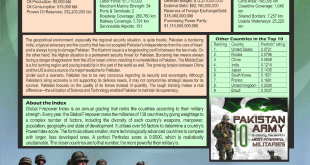Question 1-3: From exactly seven objects – R, S, T, U, X, Y, and Z – a group of exactly four objects must be selected in accordance with the following conditions:
If R is selected, T must also be selected.
If S is selected, U must also be selected.
If X and Y are both selected together, T cannot be selected.
1. If X and Y both are selected together, which of the following must also be selected?
(a) R (b) S (c) T (d) U
2. If S and Z are selected together, each of the following could also be selected.
(a) R (b) T (c) U (d) X
3. If U is not selected, which of the following can be, but does not need to be selected?
(a) R (b) S (c) T (d) X
Question 4-9: A certain group of eight people is made up of two women S and T, three men U, V, and W, and three children X, Y and Z. Each of the eight must be on one, and only one, of three teams being formed according to the following conditions:
Each team must have either two or three members.
Each team must have at least one child.
S and X cannot be on the same team.
V and W cannot be on the same team.
U and Y must be on the same team.
4. If U is on the same team as V, which of the following pairs must be on a team together?
(a) S and Y (b) S and Z
(c) T and W (d) T and Y
5. If S is on the same team as Y, which of the following could be true?
(a) U is on a team with only one other member.
(b) T is on a team with only one other member.
(c) T is on the same team as V.
(d) W is on the same team as Y.
6. If the two women are on a team together, which of the following must be on a team, with only one other member?
(a) U (b) V (c) W (d) X
7. If two of the men are on a team together, which of the following must be on a team that has three members?
(a) S (b) T (c) V (d) Y
8. If S is on the same team as U, which of the following could be true?
(a) The two women are on a team together
(b) Two of the men are on a team together.
(c) S is on a team with V
(d) U is on a team with W.
9. If one man is on each team, any of the following pairs could be together on a team EXCEPT:
(a) S and T (b) S and W
(c) T and U (d) T and W
Question 10-13: Six products – U, V, W, X, Y and Z – are to be placed in the display window of a vending machine with six compartments. Numbered 1 through 6 from left to right, the products must be placed in the window, one product in each compartment, according to the following conditions:
U cannot be immediately to the left or immediately to the right of V.
W must be immediately to the left of X.
Z cannot be in compartment 6.
10. Which of the following products CANNOT be placed in compartment 1?
(a) U (b) V (c) W (d) X
11. If X is placed in compartment 3, W must be placed in compartment.
(a) 1 (b) 2 (c) 4 (d) 5
12. If U is placed in compartment 5, which of the following products must be placed in compartment 6?
(a) V (b) W (c) X (d) Y
13. If Z is placed in compartment 3, immediately to the right of X, which of the following products must be placed in compartment 5?
(a) U (b) V (c) W (d) Y
Question 14-20: The manager of a commercial printing firm is scheduling exactly six jobs – P, Q, S, T, W and X – for a particular week, Monday through Saturday. Each job can be completed in one full day and exactly one job will be completed in one full day and exactly one job will be scheduled for each day. The jobs must be scheduled according to the following conditions:
 P must be printed sometime before S is printed.
P must be printed sometime before S is printed.
T must be printed on the day immediately before or the day immediately after the day on which X is printed.
W must be printed on Thursday.
14. Which of the following is an acceptable schedule of jobs for the week?
15. Any of the following could be printed on Saturday EXCEPT:
(a) P (b) Q (c) S (d) T
16. If Q is printed on Wednesday, which of the following could be true?
(a) P is printed on Tuesday
(b) S is printed on Monday
(c) S is printed on Friday
(d) T is printed on Monday
17. If X is printed on Monday, which of the following must be true?
(a) P is printed sometime before Q
(b) P is printed sometime before W
(c) Q is printed sometime before S
(d) W is printed sometime before S
18. If P is printed on Tuesday, which of the following must be true?
(a) Q is printed on Monday
(b) S is printed on Thursday
(c) S is printed on Saturday
(d) T is printed on Friday
19. If T is printed on Tuesday, any of the following could be true EXCEPT:
(a) P is printed on Monday
(b) Q is printed on Saturday
(c) S is printed on Wednesday
(d) S is printed on Friday
20. If Q is printed on Friday, which of the following must be true?
(a) P is printed on Monday
(b) P is printed on Wednesday
(c) S is printed on Saturday
(d) T is printed on Monday
Question 21-25: A florist has exactly seven varieties of flowers — P, Q, R, S, T, U, and V — from which she must select combinations of exactly five varieties with which to make flower arrangements. Any combination of the five varieties that conforms to all of the following conditions is acceptable.
If P is used in an arrangement, T cannot be used in that arrangement.
If Q is used in an arrangement, U must also be used in that.
If R is used in an arrangement, T must also be used in that.
21. Which of the following is an acceptable combination of varieties that the florist can select for an arrangement?
(a) P, Q, S, T, U (b) P, Q, R, U, V
(c) P, S, T, U, V (d) Q, R, S, T, U
22. If the florist selects variety R to be included in an arrangement, which of the following must be true of that arrangement?
(a) P is not used (b) U is not used
(c) Q is used (d) S is used
23. If variety P is used in an arrangement, which of the following CANNOT be used in that arrangement?
(a) Q (b) R (c) S (d) U
24. If the florist does not select variety V for an arrangement, which of the following also CANNOT be selected?
(a) P (b) Q (c) R (d) S
25. Which of the following substitutions can the florist always make without violating the conditions governing flower combination, provided the variety mentioned first was not, and the variety mentioned second was, originally going to be used in the arrangement concerned.
(a) P for R (b) Q for U
(c) R for T (d) S for V
 Jahangir's World Times First Comprehensive Magazine for students/teachers of competitive exams and general readers as well.
Jahangir's World Times First Comprehensive Magazine for students/teachers of competitive exams and general readers as well.



